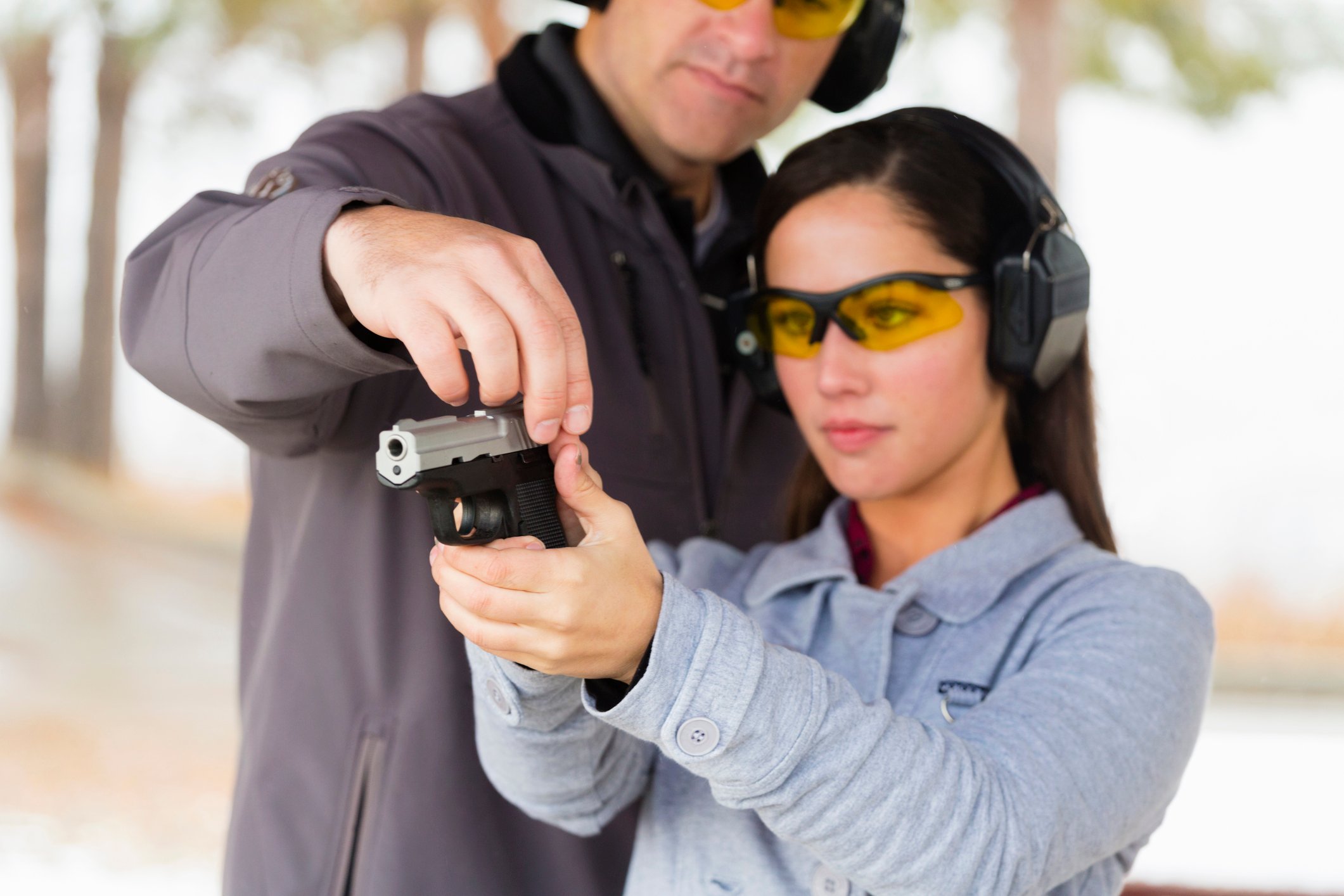The fiscal third-quarter earnings report from American Outdoor Brands (AOBC +0.09%) showed just how difficult the environment still is for firearms manufacturers, well over two years into the so-called Trump slump.
Not surprisingly, the industry downturn has caused manufacturers like American Outdoor's Smith & Wesson, Sturm, Ruger (RGR +0.74%), and Sig Sauer to significantly cut back on production. Up-to-date data is not available, but according to the latest Annual Manufacturing and Export Report from the Bureau of Alcohol, Tobacco, Firearms, and Explosives (BATFE), there were 28% fewer firearms produced in 2017 than the year before. (The agency delays the release of its data by one year for competitive reasons.)

Image source: Getty Images.
Locked and loaded
The table below shows how production dropped from 2016 to 2017.
|
Annual Firearms Production | ||||
|---|---|---|---|---|
|
Year |
Pistol |
Revolver |
Rifle |
Shotgun |
|
2008 |
1,387,271 |
431,753 |
1,746,139 |
630,710 |
|
2009 |
1,868,258 |
547,195 |
2,248,851 |
762,699 |
|
2010 |
2,258,450 |
448,927 |
1,830,556 |
743,378 |
|
2011 |
2,598,133 |
572,857 |
2,318,088 |
862,401 |
|
2012 |
3,487,883 |
667,357 |
3,168,206 |
949,010 |
|
2013 |
4,441,726 |
725,282 |
3,979,570 |
1,203,072 |
|
2014 |
3,633,454 |
744,047 |
3,379,549 |
935,411 |
|
2015 |
3,557,199 |
885,259 |
3,691,799 |
777,273 |
|
2016 |
4,720,075 |
856,291 |
4,239,335 |
848,617 |
|
2017 |
3,691,010 |
720,910 |
2,504,092 |
653,139 |
Data source: BATFE. "Miscellaneous firearms" category excluded.
Although there were nearly 2.5 times as many handguns produced in 2017 as in 2008, and 33% more long guns, 2017 saw a dramatic decline from 2016. There were 41% fewer rifles made and 23% fewer shotguns, which helps explain why the iconic Remington Arms was sent into bankruptcy a year ago.
So which company was the biggest? Well, it's telling to note which company didn't make the top-10 cut. Although perhaps better known than some other brands, Austrian manufacturer Glock was far down the 2017 list at No. 11. But lesser known brands (to those outside the shooting industry) such as Kimber and revolver maker Heritage Manufacturing placed higher.
Rifle and shotgun manufacturer Savage Arms, a division of Vista Outdoor (VSTO +0.00%), was the sixth-largest gunmaker overall and the third-biggest rifle manufacturer. In 2016, Savage was the eighth largest gunmaker. But Vista is looking to get rid of its firearms business and says it's close to selling Savage Arms. However, it will retain its ammunition business.
Check out the latest earnings call transcript for Sturm, Ruger.
Long arms make a difference
In 2016, Smith & Wesson produced over 2.1 million firearms to narrowly defeat Ruger as the biggest U.S. gunmaker, a position the latter had held for several years running.
In 2017, although Smith & Wesson was still the largest handgun manufacturer, producing over 1.2 million pistols and revolvers, Ruger once again claimed the title of biggest gunmaker overall on the basis of producing two and a half times as many rifles as Smith & Wesson. Below are the top gunmakers in the U.S. in 2017.
|
Manufacturer |
Pistols |
Revolvers |
Rifles |
Shotguns |
Total Firearms Volume* |
|---|---|---|---|---|---|
|
Sturm, Ruger |
781,623 |
172,104 |
661,171 |
0 |
1,631,554 |
|
Smith & Wesson |
1,032,450 |
207,384 |
265,356 |
21 |
1,506,256 |
|
Remington Arms |
59,581 |
0 |
453,513 |
269,391 |
816,421 |
|
Sig Sauer |
536,636 |
0 |
35,920 |
0 |
572,694 |
|
Maverick Arms |
0 |
0 |
80,275 |
302,830 |
499,100 |
|
Savage Arms^ |
0 |
0 |
364,565 |
15,861 |
380,426 |
|
Henry RAC |
0 |
0 |
235,037 |
0 |
235,037 |
|
Heritage Manufacturing |
0 |
226,065 |
0 |
0 |
226,065 |
|
Kimber Manufacturing |
183,858 |
21,349 |
11,378 |
0 |
216,585 |
|
Wm. C. Anderson |
1,448 |
0 |
2,295 |
0 |
215,125 |
Data source: BATFE. *Total firearms volume includes "miscellaneous firearms" category. ^Data from company.
Beyond the battle for the top spot, we see that Remington, despite its bankruptcy and a 41% drop in rifle production in 2017, still produced more long guns than any other manufacturer. Ruger, however, became the country's biggest rifle maker.
Still a troubled industry
It's clear that the industry is still in a deep funk. The FBI reported there were 8% fewer background checks conducted on potential firearms purchasers in 2017. But when the National Shooting Sports Foundation adjusts the data to exclude records for things like checking in on existing permit holders -- which gives a truer picture of firearms demand -- we see the number of background checks fell by over 11% that year. It was down another 6% in 2018 and is trailing 2018's numbers by a like percentage so far this year, so it may have finally hit bottom.
Vista CEO Christopher Metz has called the downturn "unprecedented" and noted that most industry declines typically last from 12 to 18 months, but the current one is now entering its third year.





